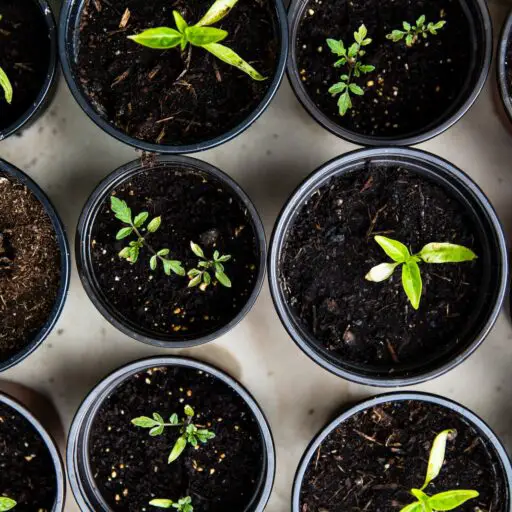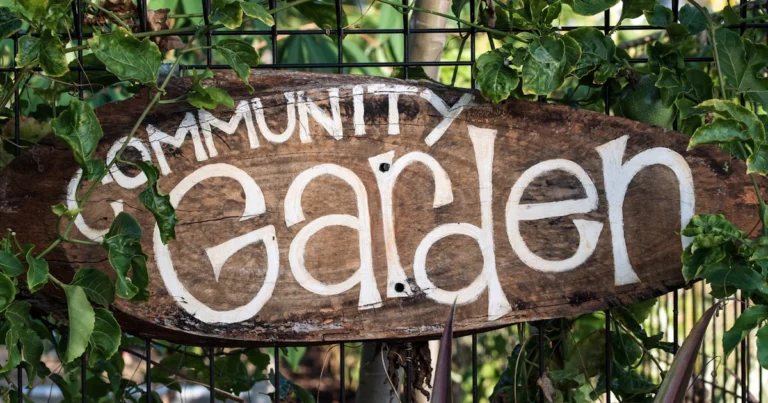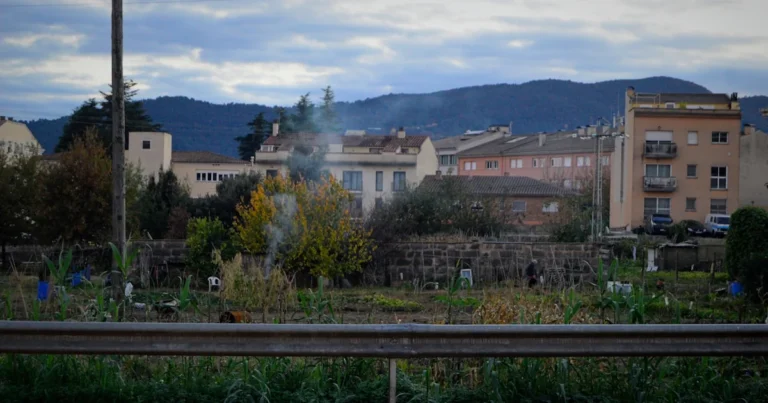Support our educational content for free when you purchase through links on our site. Learn more
Imagine a vacant lot in your neighborhood transforming into a vibrant oasis where neighbors share stories, harvest fresh veggies, and build lasting friendships. Sounds like a dream? It’s happening all over the world, and community gardens are the secret ingredient behind these thriving, connected neighborhoods. But how exactly do these green spaces cultivate stronger bonds and healthier communities? From boosting safety and sparking local economies to bridging cultural divides and teaching sustainability, community gardens are more than just patches of dirt—they’re powerful engines of social change.
In this article, we’ll dig deep into 6 compelling ways community gardens help build stronger, more connected neighborhoods. We’ll share inspiring real-life stories, expert tips from the gardeners at Community Gardening™, and practical advice to help you start or grow your own garden oasis. Ready to uncover the magic beneath the soil? Let’s get planting!
Key Takeaways
- Community gardens foster social connections by bringing diverse neighbors together through shared activities and collaboration.
- They enhance neighborhood safety by increasing natural surveillance and transforming neglected spaces.
- Gardens promote health and wellness by improving access to fresh produce and encouraging physical activity.
- They deliver environmental benefits like improved air quality, biodiversity, and climate resilience.
- Community gardens can stimulate local economies through job creation and increased property values.
- These spaces serve as inclusive educational hubs for sustainability, nutrition, and cultural exchange.
Ready to start your garden journey? Check out these essentials:
- Gardening Tools Starter Kits: Amazon | Walmart
- Raised Garden Beds: Amazon | Home Depot
- Composting Bins: Amazon | Walmart
Dive in, get your hands dirty, and watch your neighborhood bloom! 🌻
Table of Contents
- Quick Tips and Facts About Community Gardens 🌱
- Rooted in History: How Community Gardens Have Cultivated Stronger Neighborhoods Over Time 🌿
- The Power of Community Gardens: Growing Connections and Social Capital 🌻
- 1. How Community Gardens Boost Neighborhood Safety and Reduce Crime 🚨
- 2. Cultivating Health: The Role of Community Gardens in Promoting Wellness and Nutrition 🥕
- 3. Environmental Benefits: Greening Urban Spaces and Fighting Climate Change 🌎
- 4. Economic Growth: How Community Gardens Can Spark Local Business and Job Opportunities 💼
- 5. Educational Opportunities: Teaching Sustainability and Gardening Skills to All Ages 📚
- 6. Inclusivity and Diversity: Building Bridges Across Cultures Through Shared Gardening 🌍
- How to Start and Sustain a Thriving Community Garden: Tips and Best Practices 🌟
- Stories from the Soil: Real-Life Successes of Community Gardens Strengthening Neighborhoods 📖
- Overcoming Challenges: Navigating Common Obstacles in Community Gardening 🚧
- Technology and Community Gardens: How Digital Tools Enhance Local Engagement 📲
- Policy and Support: How Local Governments Can Foster Community Garden Growth 🏛️
- Conclusion: Harvesting Stronger, More Connected Neighborhoods Together 🌼
- Recommended Links for Community Garden Enthusiasts 🔗
- FAQ: Your Burning Questions About Community Gardens Answered ❓
- Reference Links and Further Reading 📚
Quick Tips and Facts About Community Gardens 🌱
Want to know what the purpose of a community garden is? Here’s a quick primer:
- Community gardens bring people together. It’s not just about the veggies! These green spaces foster a sense of belonging and shared purpose. 🤝
- They can improve local food access. Fresh, healthy produce becomes more readily available, particularly in underserved areas. 🥬
- Community gardens benefit the environment. They help green urban spaces, reduce the urban heat island effect, and support biodiversity. 🐝
- They offer learning opportunities for all ages. From seed starting to composting, community gardens are hands-on classrooms for sustainable living. 🌱
- Starting a community garden takes teamwork. Collaboration, communication, and a shared vision are key ingredients for success!
Fact: Did you know that community gardens can increase property values? Studies have shown that well-maintained green spaces can have a positive impact on nearby home prices. (Source: American Community Gardening Association)
Tip: Looking to start a community garden in your neighborhood? Check out our Community Garden Policies section for helpful resources and guidance.
Rooted in History: How Community Gardens Have Cultivated Stronger Neighborhoods Over Time 🌿

Community gardens aren’t a new phenomenon. They have a rich history dating back centuries, often emerging during times of crisis or social change. Let’s dig into their fascinating past:
Ancient Roots and Victory Gardens
- The concept of communal gardening can be traced back to ancient civilizations. Archaeological evidence suggests that early societies practiced forms of collective agriculture.
- During World War I and II, “Victory Gardens” sprouted up across Europe and North America. These gardens encouraged citizens to grow their own food, boosting morale and supporting the war effort.
The Rise of Urban Community Gardens
- The 1960s and 70s saw a resurgence of community gardening in urban areas. These gardens often addressed issues of food insecurity, social justice, and neighborhood revitalization.
- The movement gained momentum in the 1990s and 2000s, with organizations like the American Community Gardening Association (ACGA) providing support and resources.
Community Gardens Today
- Today, community gardens continue to flourish in cities and towns worldwide, adapting to the evolving needs of their communities.
- They serve as vibrant hubs for social interaction, environmental stewardship, and community development.
Fact: The world’s largest community garden is located in Denmark! The “Haveforeningernes Landssammenslutning” (Danish Allotment Garden Association) boasts over 62,000 individual gardens. (Source: Guinness World Records)
Tip: Interested in learning more about the history of community gardens in your area? Check out local historical societies, libraries, or universities for archives and resources. You might be surprised by what you uncover!
The Power of Community Gardens: Growing Connections and Social Capital 🌻
Community gardens are more than just plots of land for growing food. They are powerful catalysts for building social capital – the networks of relationships and trust that hold communities together.
1. Breaking Down Barriers, Building Bridges
- Community gardens provide welcoming spaces for people from all walks of life to connect. Shared activities like planting, weeding, and harvesting create opportunities for interaction and understanding.
- These interactions can help break down social barriers, fostering a sense of belonging and reducing isolation.
2. Nurturing Community Ownership and Pride
- When residents invest their time and energy in a community garden, they develop a sense of ownership and pride in their neighborhood.
- This shared responsibility can lead to increased civic engagement and a stronger sense of community identity.
3. Cultivating Leadership and Collaboration
- Community gardens often require collective decision-making and shared leadership. Gardeners learn to work together, resolve conflicts, and celebrate successes as a team.
- These experiences can empower individuals and strengthen community bonds.
Quote: “Gardens have a way of creating positive reasons for people to come together,” says an article from Hopeful Neighborhoods. We couldn’t agree more! (Source: Hopeful Neighborhoods)
Tip: Looking to foster stronger connections in your community garden? Consider organizing potlucks, workshops, or volunteer days to bring people together. Check out our Community Garden Events section for inspiration!
1. How Community Gardens Boost Neighborhood Safety and Reduce Crime 🚨
Can a patch of green really deter crime? Surprisingly, yes! Studies have shown a correlation between community gardens and reduced crime rates in urban areas. Here’s how:
Increased Natural Surveillance
- Well-maintained community gardens can improve visibility and create a sense of openness in a neighborhood.
- This increased natural surveillance can deter criminal activity as potential offenders are less likely to act in well-lit, visible areas.
Building Social Cohesion
- As we’ve discussed, community gardens bring people together. Stronger social ties and a sense of community can lead to increased informal social control.
- Residents who know and trust each other are more likely to look out for one another and report suspicious activity.
Transforming Vacant Lots
- Vacant lots can attract crime and blight. By transforming these spaces into vibrant community gardens, neighborhoods can reclaim these areas and create safer environments.
Fact: A study by the U.S. Department of Justice found that community gardens were associated with a 12% reduction in gun violence in the surrounding area. (Source: U.S. Department of Justice)
Tip: If you’re concerned about safety in your community garden, consider implementing measures like installing solar-powered lights, establishing clear boundaries, and working with local law enforcement to promote safety awareness.
2. Cultivating Health: The Role of Community Gardens in Promoting Wellness and Nutrition 🥕
Community gardens are blooming with health benefits! They go beyond providing fresh produce to address broader health and well-being needs:
Increased Access to Fresh Fruits and Vegetables
- Community gardens can increase access to affordable, nutritious food, particularly in food deserts – areas with limited access to grocery stores or healthy food options.
- This increased access can improve diets and reduce the risk of chronic diseases like obesity, heart disease, and type 2 diabetes.
Physical Activity and Outdoor Time
- Gardening is a great way to get exercise! Digging, planting, weeding, and harvesting all involve physical activity that can improve cardiovascular health, strength, and flexibility.
- Spending time outdoors in nature has been linked to reduced stress, improved mood, and better sleep.
Mental Health Benefits
- Gardening can be incredibly therapeutic. The act of nurturing plants and connecting with nature can reduce stress, anxiety, and symptoms of depression.
- Community gardens provide social support and a sense of purpose, which can further boost mental well-being.
Fact: According to the American Horticultural Therapy Association, gardening can help reduce pain, improve attention span, and promote relaxation. (Source: American Horticultural Therapy Association)
Tip: Looking to maximize the health benefits of your community garden? Consider organizing workshops on healthy cooking, hosting yoga or meditation sessions in the garden, or partnering with local health organizations to offer screenings or educational programs.
3. Environmental Benefits: Greening Urban Spaces and Fighting Climate Change 🌎
Community gardens are green oases in concrete jungles, providing a multitude of environmental benefits:
Improving Air Quality
- Plants act as natural air purifiers, absorbing carbon dioxide and releasing oxygen.
- Community gardens can help reduce the urban heat island effect, which occurs when cities experience higher temperatures due to a lack of vegetation.
Conserving Water
- Community gardens can implement water-wise gardening practices like rainwater harvesting, drip irrigation, and drought-tolerant planting to conserve water.
Reducing Food Waste
- By growing their own food, community gardeners can reduce their reliance on industrially produced food, which often travels long distances and generates significant waste.
Supporting Biodiversity
- Community gardens can create habitats for pollinators like bees, butterflies, and birds, which are essential for a healthy ecosystem.
Fact: One acre of trees can absorb enough carbon dioxide in a year to offset the emissions from driving a car for 26,000 miles! (Source: Arbor Day Foundation)
Tip: Want to make your community garden even more eco-friendly? Consider building raised beds with recycled materials, composting food scraps, or planting a pollinator garden to attract beneficial insects. Check out our Garden Design Ideas for inspiration!
4. Economic Growth: How Community Gardens Can Spark Local Business and Job Opportunities 💼
Community gardens can be economic engines, fostering local business development and creating job opportunities:
Supporting Urban Agriculture Businesses
- Community gardens can provide space and resources for aspiring urban farmers to test crops, develop skills, and launch small businesses.
Creating Green Jobs
- The growing demand for sustainable food and urban green spaces has led to the creation of green jobs in areas like garden design, installation, maintenance, and education.
Increasing Property Values
- As mentioned earlier, well-maintained community gardens can increase property values in surrounding areas, benefiting homeowners and the local tax base.
Boosting Tourism
- In some cases, community gardens become tourist attractions, drawing visitors interested in urban agriculture, sustainability, or simply experiencing the unique character of a neighborhood.
Fact: The urban agriculture market is expected to reach $8.1 billion by 2026, creating new opportunities for community gardens to contribute to local economies. (Source: Global Market Insights)
Tip: Interested in exploring the economic potential of your community garden? Consider hosting farmers’ markets, selling surplus produce to local restaurants, or partnering with organizations that offer job training in urban agriculture.
5. Educational Opportunities: Teaching Sustainability and Gardening Skills to All Ages 📚
Community gardens are living classrooms, providing hands-on learning opportunities for children and adults alike:
Gardening Basics and Beyond
- Gardeners of all skill levels can learn about soil science, plant care, composting, pest control, and other essential gardening techniques.
Environmental Stewardship
- Community gardens teach valuable lessons about sustainability, biodiversity, and the interconnectedness of living systems.
Nutrition and Healthy Eating
- By growing their own food, children and adults gain a greater appreciation for where their food comes from and how to make healthy choices.
Community Building and Social Skills
- As we’ve discussed, community gardens provide opportunities for social interaction, teamwork, and leadership development.
Fact: Studies have shown that children who participate in gardening programs have improved science achievement, increased environmental awareness, and healthier eating habits. (Source: National Gardening Association)
Tip: Looking to enhance the educational impact of your community garden? Consider organizing workshops, field trips, or youth programs. Partner with local schools, libraries, or community centers to reach a wider audience.
6. Inclusivity and Diversity: Building Bridges Across Cultures Through Shared Gardening 🌍
Community gardens have the power to bring people together from diverse backgrounds, fostering inclusivity and understanding:
Celebrating Cultural Traditions
- Community gardens can be spaces where people from different cultures share their traditional gardening practices, recipes, and stories.
Breaking Down Language Barriers
- Gardening is a universal language! Even without a shared language, people can connect through the shared activity of gardening.
Promoting Intergenerational Connections
- Community gardens bring together people of all ages, fostering relationships between generations and sharing knowledge and experiences.
Creating Welcoming Spaces for All
- By prioritizing accessibility, affordability, and cultural sensitivity, community gardens can create welcoming spaces for people of all abilities, incomes, and backgrounds.
Quote: “Allowing for the authentic growth of what is possible should be the leading force. Otherwise, it is a small group of people forcing a project on the community it didn’t ask for,” states an article about community gardens. This emphasizes the importance of inclusivity and community involvement. (Source: Hopeful Neighborhoods)
Tip: To ensure your community garden is inclusive and welcoming to all, consider offering multilingual signage, organizing events that celebrate different cultures, and providing accommodations for people with disabilities.
How to Start and Sustain a Thriving Community Garden: Tips and Best Practices 🌟
Ready to dig in and start a community garden? Here’s a roadmap to guide you:
1. Gather Your Gardening Gang
- Recruit passionate individuals from your neighborhood who are eager to get their hands dirty and build community.
2. Find the Perfect Plot
- Scout potential locations, considering factors like sunlight, soil quality, water access, and accessibility.
3. Secure Funding and Resources
- Explore funding options like grants, donations, or crowdfunding. Reach out to local businesses for in-kind donations of materials or services.
4. Develop a Garden Design
- Create a garden layout that meets the needs and interests of your community, considering factors like plot size, accessibility, and desired crops.
5. Establish Clear Guidelines
- Develop rules and guidelines for garden use, including plot allocation, water usage, and conflict resolution.
6. Get Planting!
- Choose plants that are well-suited to your climate and soil type. Consider starting with easy-to-grow varieties to build confidence.
7. Nurture Your Garden Community
- Organize regular workdays, workshops, potlucks, or other events to foster community spirit and keep gardeners engaged.
Tip: Starting a community garden can feel overwhelming, but remember: “The greatest lesson learned in starting a Community Garden was to simply just begin. You don’t have to have all the answers or all the tools, just begin.” (Source: Hopeful Neighborhoods)
Don’t forget to check out our helpful resources:
Stories from the Soil: Real-Life Successes of Community Gardens Strengthening Neighborhoods 📖
Let’s hear from real-life community gardens that are making a difference:
The Story Garden: A Place of Peace, Hope, and Fresh Food
- This inspiring garden operates under the simple rule of “Respect: yourself, the garden, and each other,” creating a welcoming space for all.
- The Story Garden serves as a place of peace, hope, and fresh food, demonstrating the transformative power of community gardening. (Source: Hopeful Neighborhoods)
Baltimore’s Rev. Donald O. Wilson Park: Transforming Vacant Lots into Vibrant Green Spaces
- This ambitious project is transforming six vacant lots into a vibrant green space with community gardens, ADA-compliant paths, and a walking labyrinth.
- The park will feature strategic lighting to ensure a welcoming and secure environment, demonstrating how community gardens can contribute to neighborhood revitalization. (Source: Baltimore Community Foundation)
Minneapolis’s $1 Lots: Turning Empty Spaces into Community Assets
- Following a devastating tornado, the city of Minneapolis offered residents the opportunity to rent empty lots for $1 per year to create community gardens.
- This innovative program has transformed blighted areas into thriving community spaces, demonstrating the power of grassroots initiatives. (Source: Hopeful Neighborhoods)
These stories highlight the incredible impact community gardens can have on neighborhoods, fostering connection, improving health, and creating a more sustainable and just world.
Overcoming Challenges: Navigating Common Obstacles in Community Gardening 🚧
While community gardens offer a plethora of benefits, they also come with their fair share of challenges. Let’s explore some common obstacles and how to overcome them:
Funding and Resource Constraints:
- Challenge: Securing funding for materials, tools, water access, and other essential resources can be a constant struggle for community gardens.
- Solutions:
- Explore grant opportunities from organizations like the American Community Gardening Association or the National Recreation and Park Association.
- Partner with local businesses for in-kind donations or sponsorships.
- Organize fundraising events like plant sales, potlucks, or raffles.
Land Access and Security:
- Challenge: Finding suitable land for a community garden, especially in urban areas, can be challenging. Additionally, ensuring the security of the garden and its resources is crucial.
- Solutions:
- Collaborate with city officials to identify vacant lots or underutilized public spaces that could be transformed into community gardens.
- Establish clear boundaries, install fencing, and consider security measures like locks or cameras if necessary.
- Foster a strong sense of community ownership and encourage gardeners to report any suspicious activity.
Water Management:
- Challenge: Ensuring adequate water access for the garden, especially during dry periods, can be a significant hurdle.
- Solutions:
- Install water-efficient irrigation systems like drip irrigation or soaker hoses.
- Collect rainwater in rain barrels or cisterns for garden use.
- Choose drought-tolerant plant varieties that require less water.
Pest and Disease Control:
- Challenge: Pests and diseases can quickly decimate a garden if not managed effectively.
- Solutions:
- Implement integrated pest management strategies that prioritize natural predators, companion planting, and organic pest control methods.
- Rotate crops regularly to disrupt pest and disease cycles.
- Encourage beneficial insects like ladybugs and lacewings that prey on garden pests.
Community Engagement and Volunteer Burnout:
- Challenge: Maintaining consistent community involvement and preventing volunteer burnout is essential for the long-term sustainability of a community garden.
- Solutions:
- Distribute tasks equitably and rotate leadership roles to prevent overburdening individuals.
- Organize social events and celebrations to foster community spirit and show appreciation for volunteers.
- Provide opportunities for skill-building workshops and educational programs to keep gardeners engaged and motivated.
Conflict Resolution:
- Challenge: As with any community-based initiative, conflicts may arise among gardeners regarding garden rules, plot allocation, or other issues.
- Solutions:
- Establish clear communication channels and encourage open dialogue among gardeners.
- Develop a conflict resolution process that is fair, respectful, and transparent.
- Designate a garden committee or mediator to help resolve disputes.
Technology and Community Gardens: How Digital Tools Enhance Local Engagement 📲
In today’s digital age, technology can play a valuable role in enhancing community gardens and fostering local engagement. Here are some ways technology can be integrated:
Communication and Collaboration:
- Social Media: Utilize platforms like Facebook, Instagram, and Twitter to share updates, events, and photos from the garden. Create a community forum for gardeners to connect, ask questions, and share tips.
- Messaging Apps: Create group chats on platforms like WhatsApp or Slack for real-time communication and coordination among gardeners.
- Online Calendars: Use shared calendars like Google Calendar to schedule workdays, workshops, and events, ensuring everyone is informed and involved.
Garden Management:
- Gardening Apps: Explore gardening apps that offer features like plant identification, planting calendars, pest and disease diagnosis, and weather tracking.
- Smart Irrigation Systems: Consider installing smart irrigation systems that use sensors to monitor soil moisture levels and automatically adjust watering schedules, conserving water and optimizing plant health.
- Online Resource Libraries: Create a digital library of gardening resources, including articles, videos, and links to relevant websites, providing gardeners with easy access to information.
Community Outreach and Education:
- Websites and Blogs: Develop a website or blog to showcase the garden, share its story, and provide information about upcoming events, volunteer opportunities, and ways to get involved.
- Online Workshops and Webinars: Host virtual workshops and webinars on topics like gardening basics, organic pest control, or seed starting, expanding the garden’s reach beyond its physical boundaries.
- Virtual Tours: Create virtual tours of the garden using platforms like Google Street View or Matterport, allowing people to experience the garden remotely and learn about its features.
Data Collection and Analysis:
- Online Surveys: Conduct online surveys to gather feedback from gardeners and community members, using the data to inform garden decisions and improvements.
- Data Tracking Spreadsheets: Utilize spreadsheets or online tools to track garden metrics like harvest yields, volunteer hours, or expenses, providing valuable insights into the garden’s impact and areas for growth.
Funding and Support:
- Online Fundraising Platforms: Leverage platforms like GoFundMe or Kickstarter to launch crowdfunding campaigns for specific garden projects or initiatives.
- Social Media Campaigns: Utilize social media to raise awareness about the garden and its mission, encouraging donations and support from the wider community.
Policy and Support: How Local Governments Can Foster Community Garden Growth 🏛️
Local governments play a crucial role in supporting the growth and sustainability of community gardens. Here are some policy initiatives and support mechanisms that can make a difference:
Land Access and Zoning:
- Vacant Lot Policies: Implement policies that make it easier for community groups to acquire vacant lots for community garden use, such as streamlined leasing processes or land trusts.
- Zoning Regulations: Update zoning regulations to permit and encourage community gardens in both residential and commercial areas.
- Urban Agriculture Plans: Develop comprehensive urban agriculture plans that include provisions for community gardens, ensuring their integration into the city’s overall green infrastructure.
Funding and Resources:
- Community Garden Grants: Establish grant programs specifically for community gardens, providing funding for materials, tools, water access, and other essential resources.
- Tax Incentives: Offer property tax incentives to landowners who lease or donate land for community gardens.
- Technical Assistance: Provide technical assistance to community garden groups, offering guidance on garden design, installation, maintenance, and fundraising.
Infrastructure Support:
- Water Access: Ensure access to affordable water for community gardens, such as through discounted rates, shared water meters, or rainwater harvesting systems.
- Tool Lending Libraries: Establish tool lending libraries where community gardeners can borrow tools and equipment, reducing financial barriers to participation.
- Composting Programs: Implement citywide composting programs that collect food scraps from residents and provide finished compost to community gardens, closing the loop on food waste.
Community Engagement and Education:
- Community Garden Networks: Foster the creation of community garden networks that connect gardeners across the city, facilitating the sharing of resources, knowledge, and best practices.
- Public Education Campaigns: Launch public education campaigns to raise awareness about the benefits of community gardens and encourage residents to get involved.
- School Garden Programs: Support the development of school garden programs that teach children about gardening, nutrition, and environmental stewardship.
By implementing supportive policies and providing essential resources, local governments can create an environment where community gardens can flourish, benefiting residents, neighborhoods, and the city as a whole.
Conclusion: Harvesting Stronger, More Connected Neighborhoods Together 🌼

Wow, what a journey through the vibrant world of community gardens! From their deep historical roots to their modern-day role as neighborhood powerhouses, community gardens truly are green gold for building stronger, more connected communities. We’ve seen how these shared spaces not only grow fresh food but also nurture social bonds, improve safety, boost local economies, and educate gardeners of all ages. 🌿
Remember the wise words from Hopeful Neighborhoods: “The greatest lesson learned in starting a Community Garden was to simply just begin. You don’t have to have all the answers or all the tools, just begin.” So whether you’re dreaming of transforming a vacant lot or simply want to deepen connections with your neighbors, the secret ingredient is action — and a little dirt under your nails. 👐
If you’ve been wondering how to get started or sustain your garden, we’ve covered everything from securing land and funding to leveraging technology and navigating challenges. Plus, the inspiring stories from places like Minneapolis and Baltimore show that community gardens can be true catalysts for neighborhood revitalization and pride.
So, what are you waiting for? Grab your gloves, rally your neighbors, and start planting the seeds of a stronger, greener, and more connected community today! 🌻
Recommended Links for Community Garden Enthusiasts 🔗
Ready to gear up or dive deeper into community gardening? Check out these top resources and products:
-
Gardening Tools Starter Kit:
Amazon | Walmart | Fiskars Official Website -
Raised Garden Bed Kits:
Amazon | Home Depot | Greenes Fence Official Website -
Composting Bins:
Amazon | Walmart | Envirocycle Official Website -
Books on Community Gardening:
-
Gardening Apps to Try:
FAQ: Your Burning Questions About Community Gardens Answered ❓

What role do community gardens play in fostering social connections and a sense of community among residents?
Community gardens act as social hubs where people from diverse backgrounds come together with a shared purpose. The collaborative nature of gardening encourages communication, teamwork, and trust-building. As gardeners work side by side, they exchange stories, share knowledge, and develop friendships that extend beyond the garden gates. This sense of belonging combats social isolation and strengthens neighborhood ties, creating a more resilient and supportive community fabric.
How can community gardens be used as a tool for urban renewal and revitalization of neglected neighborhoods?
Transforming vacant lots or blighted spaces into thriving community gardens can revitalize neighborhoods by improving aesthetics, increasing safety, and fostering pride among residents. These green spaces discourage illegal activities by increasing natural surveillance and community presence. Moreover, gardens can stimulate local economies by attracting visitors, supporting urban agriculture businesses, and increasing property values. The example of Minneapolis’s $1 lot program and Baltimore’s Rev. Donald O. Wilson Park project illustrate how community gardens can be cornerstones of urban renewal.
What are the benefits of intergenerational community gardening and how can it help bridge the gap between different age groups in a neighborhood?
Intergenerational gardening brings together youth, adults, and elders, creating opportunities for knowledge exchange and mutual respect. Older gardeners often share traditional gardening techniques and stories, while younger participants bring fresh ideas and energy. This dynamic fosters empathy, reduces age-related stereotypes, and strengthens community cohesion. Plus, it provides a safe, inclusive space where all ages feel valued and connected.
Can community gardens serve as a platform for community engagement, education, and outreach on topics such as sustainability, nutrition, and environmental stewardship?
Absolutely! Community gardens are living classrooms where hands-on learning about sustainable practices, healthy eating, and environmental care happens naturally. They provide a venue for workshops, demonstrations, and outreach programs that educate residents on composting, water conservation, pollinator protection, and more. By engaging community members in these topics, gardens empower individuals to make informed choices that benefit both their health and the planet.
How do community gardens contribute to neighborhood safety beyond just beautification?
Beyond beautification, community gardens increase natural surveillance by encouraging regular community presence in formerly neglected areas, which deters crime. They also foster social cohesion, where neighbors look out for one another and intervene in suspicious activities. Additionally, some gardens incorporate lighting and security measures, as seen in Baltimore’s Stronger Neighborhoods Grants projects, further enhancing safety and community pride.
What strategies can help sustain long-term community involvement in a garden?
Sustaining involvement requires shared leadership, clear communication, and regular social events that keep gardeners motivated and connected. Rotating responsibilities prevents burnout, while educational workshops and celebrations foster a sense of accomplishment. Incorporating diverse activities—like cooking classes or art projects—can also attract a wider audience. Technology tools like social media groups and online calendars help maintain engagement and coordination.
Read more about “Discover 7 Types of Community Gardens 🌱”
Reference Links and Further Reading 📚
- American Community Gardening Association – https://www.communitygarden.org/
- Hopeful Neighborhoods: The Power of Community Gardens – https://www.hopefulneighborhood.org/blog/the-power-of-community-gardens/
- Baltimore Community Foundation: Lighting Up Baltimore: 2024 Stronger Neighborhoods Grantees – https://www.bcf.org/lighting-up-balt/
- U.S. Department of Justice – Community Gardens and Crime Reduction – https://www.nij.gov/
- Arbor Day Foundation – Environmental Benefits of Trees – https://www.arborday.org/
- National Gardening Association – Benefits of Gardening for Children – https://garden.org/
- American Horticultural Therapy Association – https://www.ahta.org/
- Global Market Insights – Urban Agriculture Market Report – https://www.gminsights.com/
By tapping into these resources and embracing the spirit of collaboration, you can help your community garden grow into a thriving, inclusive, and impactful neighborhood treasure. Happy gardening! 🌻





